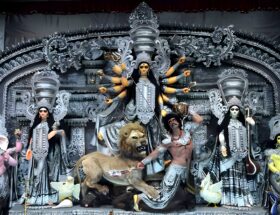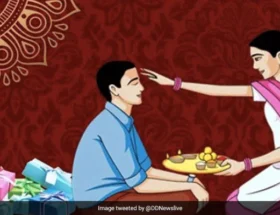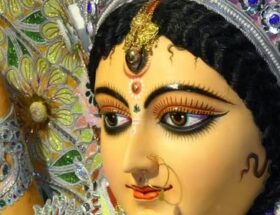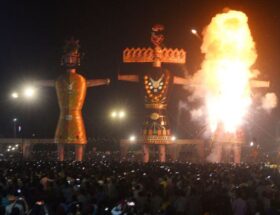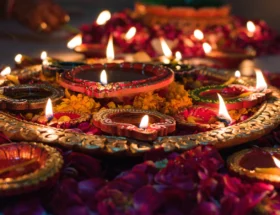Tarnetar Fair: Trinetreshwar Temple Celebrates the Divine
Introduction to the Tarnetar Fair
One of the most famous fairs held across Gujarat on the historical Trinetreshwar Temple base is the Tarnetar Fair Festival. This eventful fair depicts the vibrancy of customs and traditions besides showing regards toward the divine powers of Lord Shiva. Thousands of devotees and travelers converge here at this fair every year.
The legend and mythology underpinning the Tarnetar Fair are very strong. So, it is then connected to the Swayamvar of Draupadi from the Mahabharata. The event is, in essence, a coming together or conglomeration of culture, devotion, and revelry. It is an event consisting of culture, love, and festivity combined, which accounts for one of the most popular festivals celebrated here.
When and Where is the Tarnetar Fair Held?
This annual fair takes place during the Hindu calendar month of Bhadrapada, falling usually in August or September. It is located in Tarnetar village near Thangadh in Surendranagar district of Gujarat.
Trinetreshwar Temple: Heart of Tarnetar Fair Festival
The main attraction of the fair is the Trinetreshwar Temple, dedicated to Lord Shiv. This ancient lord’s temple, admired for architectural grace and beauty, becomes a beehive of activities during the festival. Thousands of devotees visit the temple to seek blessings and participate in the many rituals associated with the deity.
Traditional Attire and Decorations
The major highlights of the Tarnetar Fair are the traditional attires worn by the people participating. The traditional attire of men and women don bright-colored costumes boasting vibrant colors that reflect the rich cultural history of Gujarat. The grounds indeed brighten with bright-colored tents, and flags having intricate designs. Festivals by nature add to the festive environment.
Folk Dances and Music Performances
It is well known for folk and music programs. The most famous and traditional dances are the Garba and Raas. They are done with lots of enthusiasm, liveliness, and energy. The pulsating beat of the drums and folk songs adds to the fun factor of the Garba, making the viewers almost impossible to sit in inertia.
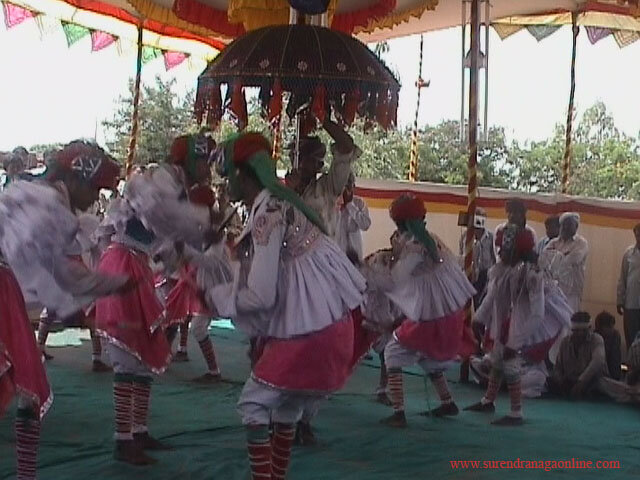
Handicrafts and Art Shows
Tarnetar Mela is a paradise for art lovers. There are several stalls and exhibitions about handicrafts, textiles, and jewelry. A visitor can delve into and buy these exquisite items to help the local artisans and their traditional crafts.
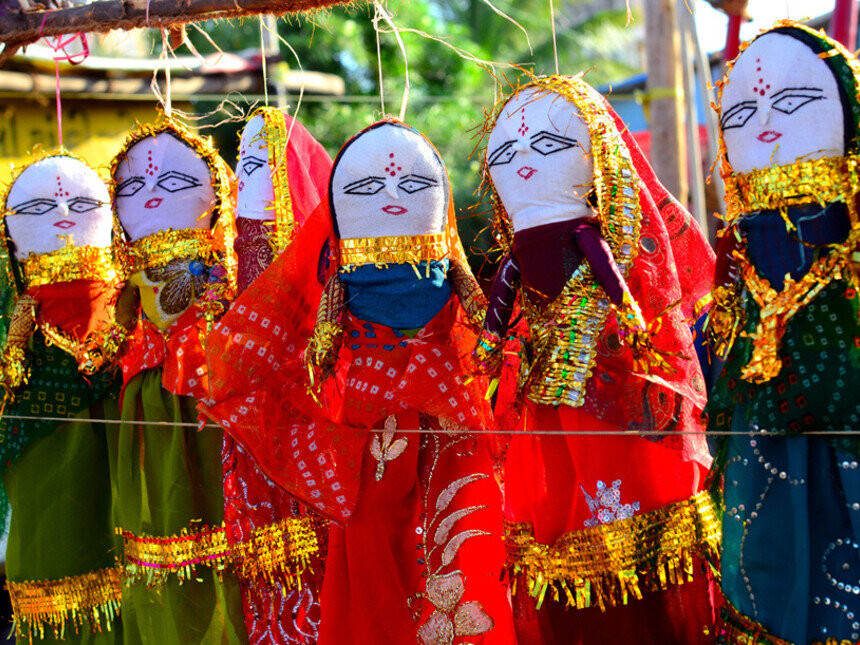
Gastronomic Delights
Food plays a major role in the Tarnetar Fair. Local delicacies of this place, varying in its variety, get prepared and are offered to one and all. From savory snacks to sweet dishes, the fair has it all that exudes the richness in the cuisine of this region.
Rituals and Ceremonies on Tarnetar Fair Festival
It is also marked by many rituals and ceremonies that epitomize the dedication and cultural practices here in the region. This Trinetreshwar temple receives a huge throng of devotees who flock to the prayers, processions, and offerings to pray to the gods for their divine blessings and prosperity.
Impact on Local Economy
The Tarnetar Fair injects much into the economy of the locals. It attracts tourists from far and wide, thereby benefiting the local businesses, artisans, and those belonging to the hospitality sector. Much of the activity generated during this period has kept alive the sustenance for too many locals.
Conclusion on Tarnetar Fair Festival
The Tarnetar Fair symbolizes divine blessings, cultural heritage, and communal harmony. Bringing together all aspects of life here, rich in traditions and high-energy festivals of the land of Gujarat, let a visitor know whether you are a devotee or a culture enthusiast; the Tarnetar Mela is undoubtedly going to be an unforgettable experience. A visit to the Tarnetar Fair will acquaint one with the colors, sounds, and flavors of this unique cultural event.
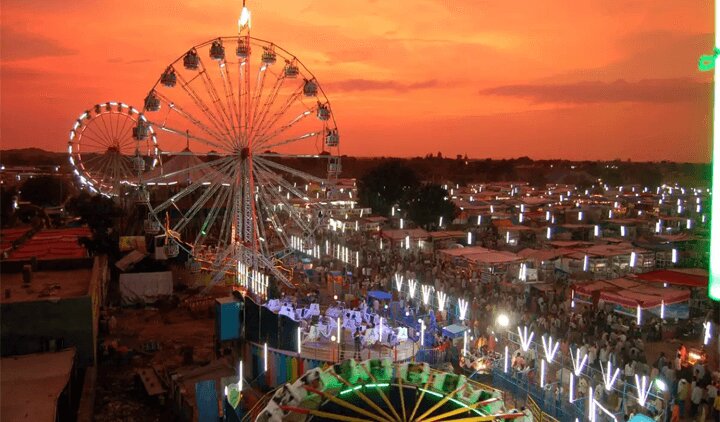
Sarees that women can wear in this festival: Elegant Sky Blue Handloom Linen Saree
Frequently Asked Questions on Tarnetar Fair (Temple of Shiva or Trinetreshwar)
1. What is Tarnetar Fair?
Tarnetar Mela is an annual festival in Gujarat based on the Trinetreshwar Temple.They hold it to highlight the local culture with lots of folk music, dance, and entertainment.
2. When do people celebrate the Tarnetar Fair?
The celebration goes on during the Hindu month of Bhadrapada, which generally falls at some time during the months of August and September.
3. Where do they hold the Tarnetar Fair?
They conduct the program in Tarnetar village near Thangadh in the Surendranagar district of Gujarat.
4. What is the importance of the Trinetreshwar Temple?
The Trinetreshwar Temple is an ancient temple of Lord Shiva, which is the central point of attraction for this fair. The Trinetreshwar Temple represents one of the oldest and ancient temples with tremendous architectural and historical value.
5. What type of everyday costume do they wear during the Tarnetar fair?
People who come to this fair are all dressed vibrantly and intricately in grand traditional costumes. Men and women alike don vibrating costumes that provide an image of the rich cultural heritage of Gujarat.
6. What types of performances do people witness at the Tarnetar fair forms?
Also, traditional folk dances like ‘Garba’ and ‘Raas’ and folk music represent the cultural heritage of the place.
7. Are there any special foods associated with the Tarnetar Fair?
The fair offers a variety of local delicacies to its visitors. From savory snacks to sweet treats, one can indulge in celebrating regional culinary diversity.
8. What crafts do people see in the Tarnetar Fair?
You can find different crafts, clothes, and jewelry. There are various handicrafts, textiles, and jewelry.
9. What kind of rituals do they perform during the Tarnetar Fair?
The devotees engage in rituals and prayers in the Trinetreshwar Temple. People perform these rituals to invoke divine powers, making them the main attraction of the festival.
10. What impact does the Tarnetar Fair have on the local economy?
Hundreds of thousands of tourists visit this fair, and local businessmen, artisans, and vendors who earn their living by selling these articles receive their gifts. Thus, it gives a significant fillip to the local economy.

